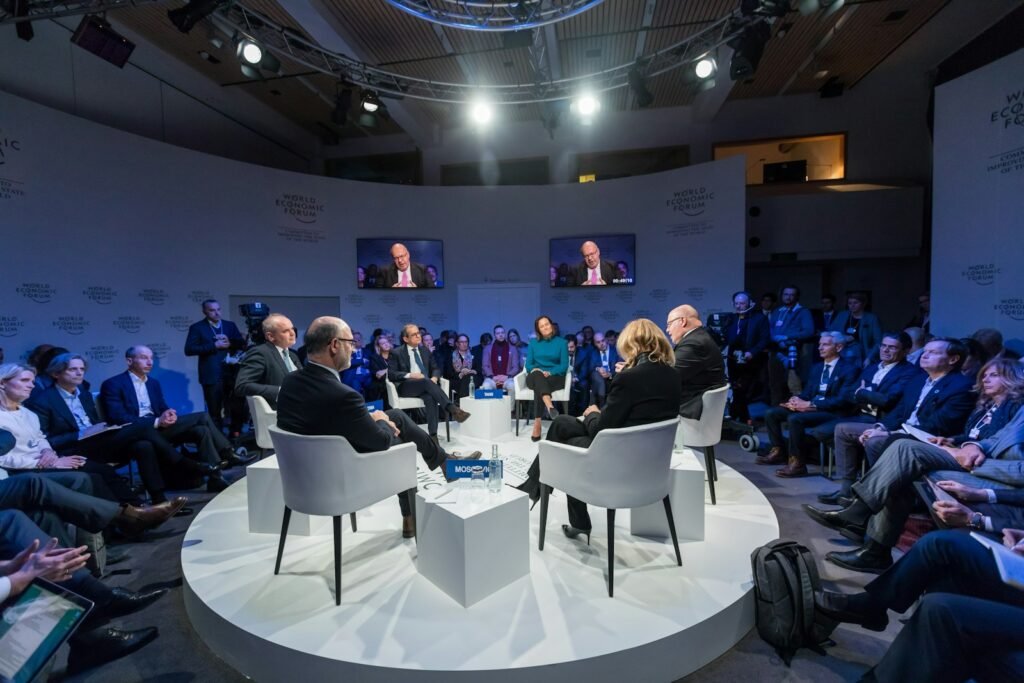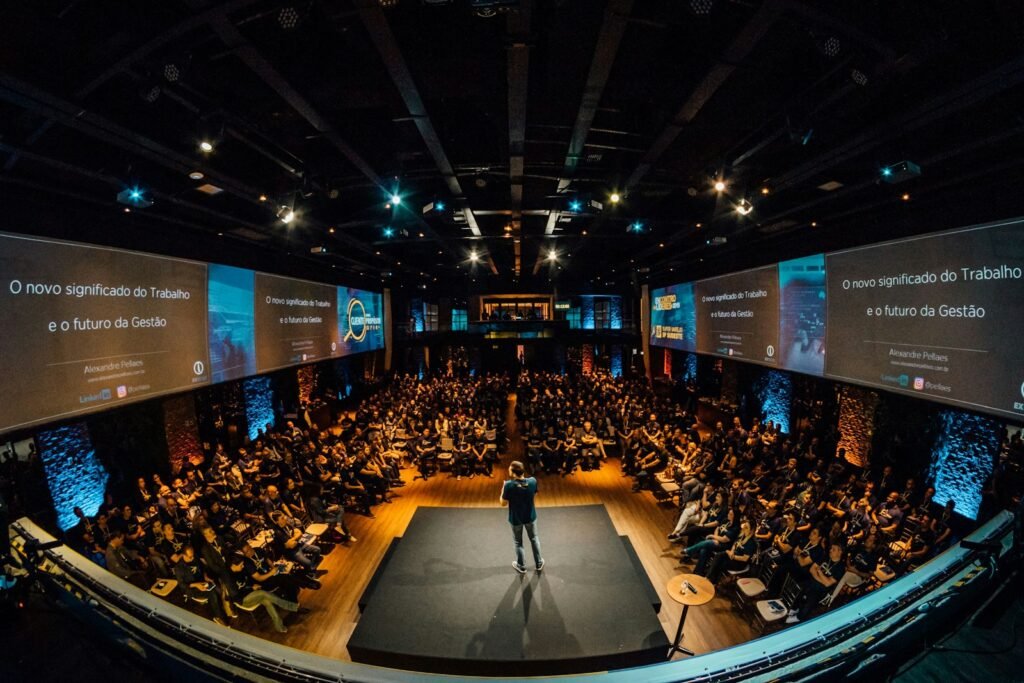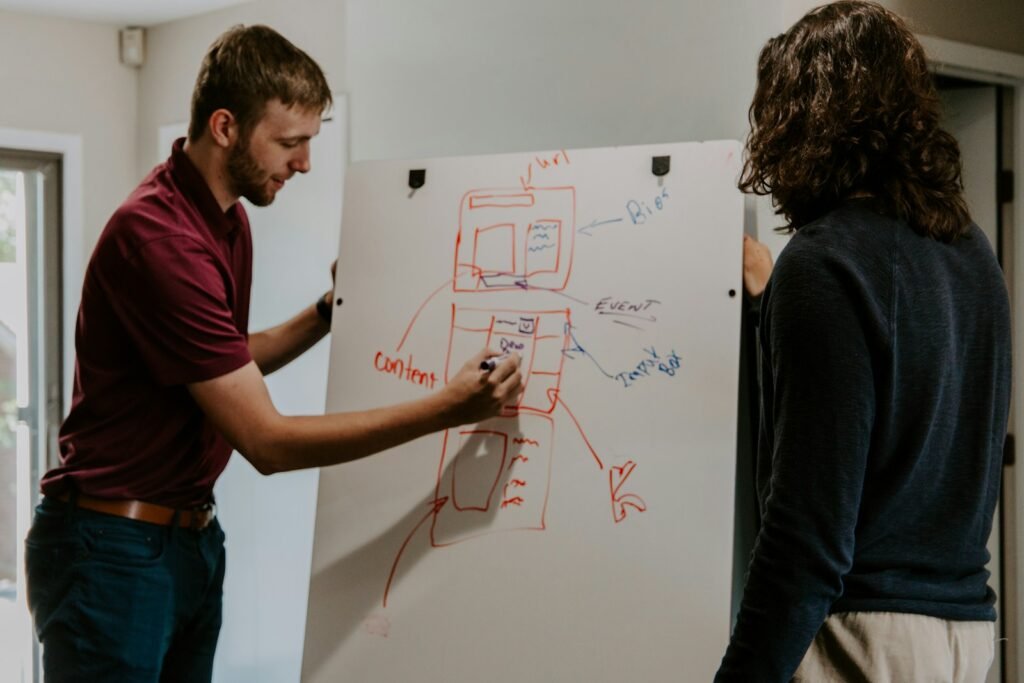
How to Engage Your Audience from the Start
Picture yourself in a bustling party, surrounded by strangers and new faces. How do you navigate through the sea of unfamiliarity to capture someone’s undivided attention? The same enigmatic aura is required when stepping onto the stage for a presentation. Your goal is to mesmerize them, pique their curiosity, and ignite that flame of interest that will keep them hooked throughout your discourse.
A powerful technique to captivate your audience right from the start is by posing a question that challenges their preconceptions. This not only stimulates their cognitive faculties but also fosters active engagement. As Benjamin Franklin astutely remarked, “Tell me and I forget. Teach me and I remember. Involve me and I learn.” By involving your audience in the initial moments, you are setting the stage for an electrifying and participatory experience. Always bear in mind that your aim is to transform them into eager contributors rather than passive spectators of your narrative.
The Power of Visual Aids in Presentations
Visual aids are the unsung hers of a presentation, lurking in the shadows like a mysterious sidekick in a superhero movie. They may not steal the spotlight, but boy, do they know how to deliver a knockout punch! Just like how it’s not just the hero’s clever quips that keep you hooked on a film, but also the mind-blowing action sequences and dazzling special effects. Visual aids have that same power to transform your presentation from mundane to mesmerizing in an instant.
In the wise words of Pablo Picasso, “Art washes away from the soul the dust of everyday life.” Let’s be real – presentations can sometimes feel as thrilling as watching paint dry. But fear not, for visual aids are here to breathe fresh life into your content and hold your audience captive. Whether it’s a jaw-dropping infographic, a compelling chart, or even a cheeky meme strategically placed in your slides – these tools can elevate your message with undeniable impact. So remember, when prepping for your next big presentation, tap into your inner Picasso and unleash a visual masterpiece that will leave everyone speechless!
Crafting a Compelling Storyline for Your Presentation
Crafting a captivating storyline for your presentation is akin to orchestrating a mesmerizing performance – you desire your audience to be ensnared right from the outset. Delve into what resonates with them, what compels them to pay heed. As Maya Angelou so eloquently put it, “People will forget what you said, people will forget what you did, but people will never forget how you made them feel.” Thus, strive to evoke emotions, to stir something within them and entwine them in your narrative.
Your storyline serves as the foundation of your presentation; hence it must be robust and compelling. In the words of Steve Jobs, “The most powerful person in the world is the storyteller.” Therefore, embrace that role wholeheartedly. Initiate with a gripping hook, interlace anecdotes or personal tales throughout, and escalate towards an impactful climax. Keep your audience on tenterhooks, eagerly anticipating what unfolds next. Bear in mind that a well-crafted story lingers in their minds long after the presentation has concluded.
Utilizing Body Language to Enhance Your Message
When it comes to captivating your audience, the way you carry yourself speaks volumes long before a single word escapes your lips. As Laurie Beth Jones so astutely put it, “Communication is truly effective when we speak in a language that resonates with our listeners, not just ourselves.” Your stance, movements, and even facial expressions all play a vital role in conveying your message.
Recall a moment when you were completely absorbed in a speaker’s delivery. It’s likely that their poised demeanor, lively gestures, and sincere facial expressions were instrumental in holding your attention. As the esteemed psychologist Albert Mehrabian once remarked, “During a presentation, our spoken words only scratch the surface of what our audience absorbs.” So be sure to maintain eye contact, utilize expansive gestures to highlight key points, and let your body language mirror your passion for the subject at hand.
The Importance of Rehearsing Your Presentation
Rehearsing your presentation is akin to crafting a first impression – you have but one opportunity to make it count. While some may believe they can simply improvise and rely on their charisma to carry them through, the wise words of Benjamin Franklin remind us that “By failing to prepare, you are preparing to fail.” So why gamble with uncertainty when a bit of practice can guarantee success?
Picture your presentation as a theatrical performance, with rehearsals serving as your final run-through. Just as a musician wouldn’t dare take the stage without honing their craft, standing before an audience unprepared should be out of the question. Recall the age-old saying, “The more you sweat in peace, the less you bleed in war” – though originally intended for battlefields, its wisdom extends to presentations as well. Grab your notes, assemble a supportive audience of friends or colleagues, and rehearse until delivering your speech feels effortless. Your listeners will appreciate it, and you’ll thank yourself for being thoroughly prepared.
Handling Q&A Sessions Like a Pro
You’ve just finished delivering an absolutely brilliant presentation, captivating the audience with your sharp wit and profound wisdom. Now comes the moment of truth the dreaded Q&A session. But fear not, my dear friend. This is your opportunity to shine even brighter and flaunt your expertise like a dazzling gem.
Approach the questions with the same confidence and warmth you would greet a steaming cup of coffee on a frosty morning. Remember, there are no foolish queries, only chances to exhibit your vast knowledge and adept problem-solving abilities. As Winston Churchill famously declared, “The price of greatness is responsibility.” Seize control of that Q&A session like a true leader and prove to your audience that you are more than capable of handling whatever they throw at you.
And if by chance you find yourself stumped by a question, do not fret. Use it as an opportunity to demonstrate humility and poise by responding gracefully with something along the lines of, “That’s an excellent question; allow me to delve deeper into that topic and provide you with a thorough answer.” It’s all about how you tackle those unexpected twists in life, my friend.
So stand tall, handle those questions with finesse, and leave an indelible mark on your audience that they won’t soon forget.
Incorporating Interactive Elements for Audience Engagement
Let’s infuse a touch of enchantment into your presentation with interactive elements that will captivate your audience in a whirlwind of excitement. No more dull monologues, it’s time to ignite the crowd and fill them with energy!
To kick things off and get everyone involved, why not start with some mind-boggling questions? Throw in a quirky trivia related to your topic or ask for a show of hands on an intriguing issue. As the wise Steve Jobs once pondered, “Innovation distinguishes between a leader and a follower.” So, be the trailblazer in the room and let your audience join in on the conversation.
Another way to keep things lively is by incorporating rapid-fire polls or surveys using audience response systems. Not only does this keep them engaged, but it also offers you valuable insights to tailor your message accordingly. Remember, a presentation is an interactive dance – so sprinkle it with gems that will leave your audience pleasantly perplexed!
Tips for Overcoming Nervousness Before Presenting
Experiencing those pre-presentation jitters is a common occurrence, almost like a ritual for any hopeful speaker. Imagine yourself as a brave warrior preparing to enter the tumultuous battlefield of the boardroom. It’s worth noting that even legends like Winston Churchill stumbled over their words before captivating audiences with their eloquence. As Mark Twain famously remarked, “Courage is resistance to fear, mastery of fear – not absence of fear.” Embrace those fluttering butterflies in your stomach as a signal that you’re on the verge of something remarkable.
To combat those nerves, consider striking some power poses in front of the mirror just before showtime. Channel your inner Wonder Woman or Superman and adopt a pose radiating confidence. Amy Cuddy, an esteemed social psychologist, once preached, “Our bodies change our minds, and our minds can change our behavior, and our behavior can change our outcomes.” Boost your morale by striding around the room triumphantly and observe how your mindset shifts. Remember, you’re not merely delivering a presentation; you’re weaving a narrative, imparting knowledge, and potentially sparking inspiration in others. Embrace the nervous energy as part of this thrilling journey and let your passion propel you onward.
Creating Memorable Closing Remarks
The impact of closing remarks on your audience is truly profound, leaving a lingering resonance that is not easily forgotten. It is imperative to conclude your presentation with flair and finesse, ensuring that the final moments are as powerful as the opening ones.
To craft unforgettable closing remarks, consider revisiting your initial statement or main message. In the words of Maya Angelou, “People will forget what you said, people will forget what you did, but people will never forget how you made them feel.” Thus, strive to stir emotions and leave a lasting impression of inspiration upon your listeners.
Moreover, incorporating a call to action or posing a thought-provoking question can extend the dialogue beyond the confines of your presentation. Echoing Albert Einstein’s wisdom – “The important thing is not to stop questioning” – encourage your audience to embrace new perspectives and take concrete steps based on their newfound knowledge. By igniting their curiosity in this manner, you can guarantee that your concluding remarks resonate long after the curtains fall.


